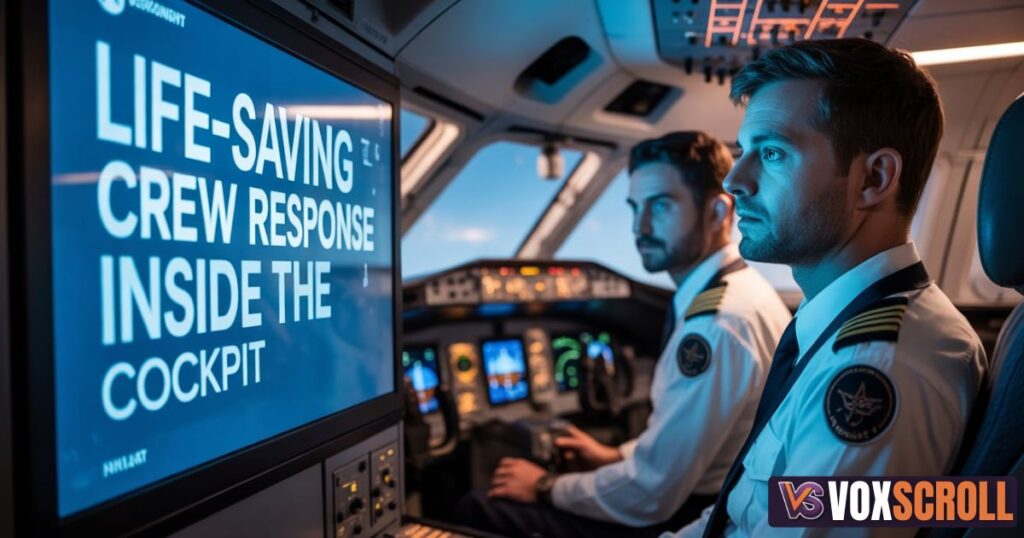Breaking News: Boeing 787 Mid-Air Emergency Shocks the Nation
A routine journey turned into a high-stakes emergency when a United Airlines aircraft issued a Mayday declaration shortly after takeoff. The plane, a Boeing 787 Dreamliner, departed from Washington Dulles International Airport en route to Munich but encountered an unexpected engine failure at approximately 10,000 feet.
This triggered a rapid shift from calm to crisis, forcing the flight crew to act quickly under pressure. The Mayday call alerted air traffic controllers, who immediately began clearing airspace and initiating emergency protocols. What followed was a textbook example of aviation safety in action — a blend of quick thinking, expert training, and mechanical reliability, ultimately ensuring all passengers returned safely.
What Really Happened During the Flight?
Shortly after departure, Flight 108 experienced an engine failure on its left engine. The aircraft was a twin-engine aircraft, meaning it could still fly on one engine. However, a mid-air emergency at such an early stage in flight can be extremely serious.
The crew followed emergency flight protocols and contacted air traffic controllers immediately. They maintained a controlled descent and kept the aircraft stable while working through the emergency checklist.
Urgent Communication from Pilots: Mayday Explained
Pilots quickly issued a Mayday call to Washington Dulles International Airport. This is the highest level of emergency communication in aviation. It signals that the aircraft is in danger and needs immediate help.
The pilot’s response was calm and professional. They kept communication open with air traffic controllers, explaining the mechanical issue and requesting emergency landing clearance.
Life-Saving Crew Response Inside the Cockpit

The flight crew’s professionalism played a key role in managing the emergency. Trained through rigorous aviation training protocols, they worked as a unit to follow every step for single-engine operations.
Their crew’s response under pressure ensured that passengers remained calm. The flight attendants kept everyone informed and followed all passenger safety procedures.
The Mechanical Problem: Engine Failure or Something Else?
Initial reports suggest a catastrophic engine malfunction in the left engine. Though Boeing 787 Dreamliner engines are designed with multiple safety systems, failures can still occur.
A full maintenance investigation is underway. Aircraft maintenance procedures will examine the engine’s components. An engine inspection report will reveal whether the issue was due to wear, manufacturing, or another mechanical issue.
Why Immediate Landing Wasn’t Possible
Though the plane was in distress, an immediate landing wasn’t safe. The aircraft was loaded with fuel for the entire transatlantic flight, making it too heavy to land right away.
To avoid an overweight landing, the pilots performed a fuel dumping procedure. This allowed the plane to reduce weight safely and avoid damage to its landing gear stress limits and aircraft structural integrity.
| Condition | Limitation |
| Max Takeoff Weight | Higher than max landing weight |
| Safe Landing Requirement | Fuel dump needed for long-haul flights |
| Time to Dump Fuel | Around 20–30 minutes |
Emergency Protocols at the Airport: Response in Action
Washington Dulles International Airport activated full airport emergency response systems. Fire and rescue teams were dispatched to the runway, ready for any situation.
The airport also cleared the designated runway. This emergency runway clearance ensured a smooth and safe return. The ground crew response was fast, precise, and followed all commercial aviation safety rules.
Passenger Safety: Top Priority in Aviation
Thanks to quick action and solid planning, all passengers on Flight 108 were safe. After landing, everyone was evacuated without injury, showing how passenger safety procedures work during emergencies.
United Airlines’ safety standards are among the best. The event highlighted the success of aviation safety systems, especially in unexpected emergencies like this.
Investigation Begins: What Happens Next?
Now, a joint FAA investigation and United Airlines internal review are in progress. The focus is to find the cause and prevent future problems.
All parts of the failed engine will go through aircraft inspection. Experts from Federal aviation authorities and Boeing will check every system, wire, and log to create a final engine inspection report.
Broader Implications for the Boeing 787 Fleet

This case has raised questions about the Boeing 787 Dreamliner. Although it has a strong safety record, some are asking whether more aircraft maintenance procedures are needed.
So far, there are no plans to ground the twin-engine aircraft fleet. But airlines might increase inspections to ensure twin-engine redundancy is reliable under stress.
Is Air Travel Still Safe? Expert Opinions Say Yes
Experts agree that flying remains the safest mode of transportation. Events like this are rare, and aviation systems are designed with emergency flight protocols that work.
The successful emergency resolution of Flight 108 proves that modern aviation safety measures protect lives even in extreme conditions. Training, design, and response time all contribute to making flying safe.
FAQs:
1- What does it mean when a flight declares a Mayday?
A Mayday call is the most urgent distress signal in aviation. It indicates that the aircraft is facing a serious emergency, such as a mechanical failure, and needs immediate assistance from air traffic control.
2- Was anyone injured during the Boeing 787 mid-air emergency?
No injuries were reported. All passengers and crew were safely returned to the ground, thanks to quick pilot response and effective emergency protocols.
3- What caused the United Airlines flight to declare Mayday?
The Mayday declaration was made due to a suspected engine failure in one of the Boeing 787’s engines. A full investigation is still underway to determine the root cause.
4- How did the flight crew handle the Boeing 787 emergency?
The flight crew’s response was swift and professional. They followed aviation safety procedures, coordinated with air traffic control, and performed a controlled fuel dump before landing.
5- Is the Boeing 787 Dreamliner still safe to fly?
Yes. Despite the incident, the Boeing 787 Dreamliner is considered one of the safest commercial aircraft, with robust twin-engine redundancy and advanced safety systems.
6- What happens after a Mayday call is made?
After a Mayday call, emergency services are activated, the aircraft may change flight plans, and airport emergency teams prepare for a possible crash landing or technical landing.
7- Will other Boeing 787 aircraft be grounded after this emergency?
As of now, no Boeing 787 aircraft have been grounded. However, the FAA and airlines may require additional inspections depending on the results of the ongoing investigation.
Final Thoughts:
The Boeing 787 Mid-Air Emergency showed how a mix of technology, training, and teamwork saved lives. From the first Mayday call to the final passenger evacuation, everything worked the way it was supposed to. Though the cause of the engine failure is still under review, the outcome has boosted public trust in commercial aviation safety. As we wait for the final engine inspection report, one thing is clear — air travel in the U.S. is built to withstand the unexpected..
Welcome to VoxScroll! I’m Ali Hussnain, an AI-Powered SEO, and Content Writer with 2 years of experience.
I help websites rank higher, grow traffic, and look amazing. My goal is to make SEO and Web design Simple and effective for everyone.
Let’s Achive more together!

